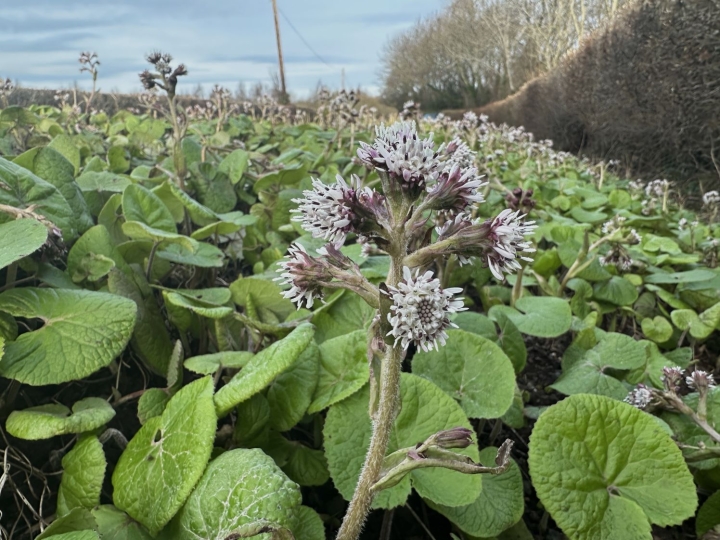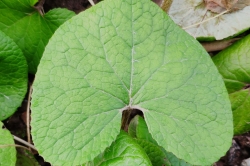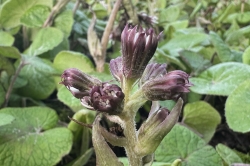Your basket is currently empty!
Home / Hedgerow Guide /
Winter Heliotrope
Winter Heliotrope
This non native member of the Daisy family, Asteraceae, has flowers that track the sun during the day, hence the name Heliotrope.
| Hedgerow Type | |
| Common Names | Bog Rhubarb |
| Scientific Name | Petasites fragrans, syn Petasites pyrenaicus |
| Season Start | Jan |
| Season End | Dec |
Leaves
The leaves are a rounded heart or kidney shape with very fine teeth around the edge and covered in hairs, especially on the underside of the leaf. They are evergreen and will present all year.
Flowers
Has several florets of mauve/lilac to white flowers on each flower stem with individual flowers opening from the outside. It flowers from about mid winter to early spring. These are female flowers although there will be some sterile male flowers present. In the UK, Winter Heliotrope has sterile male flowers and because of this can only spread vegetatively. The individual flowers have five petals, in the middle are the purple female parts with a white stigma protruding from the middle.
Habitat
Next to hedgerows, paths and beside country roads where the soil is quite wet and near to gardens it has escaped from.
Possible Confusion
Butterbur, Petasites hybridus, looks very similar and is related but much bigger than Winter Heliotrope with longer flower stems. The two are related.
Smell
Has a strong, heady smell of marzipan or as some describe it, vanilla, that can easily be sensed when walking past a flowering patch.
Frequency
Fairly common.
Medicinal Uses
Has been used in homeopathy although it is toxic.
It has also been used in perfumes and cosmetics.


























